Abstract
Evidence has been presented for the existence of an acidic protein(s) or protein portion of a more complex molecule which has a high affinity for binding noncovalently a biologically active metabolite of vitamin D. This molecule could be solubilized from the residual chromatin via treatment with either 0.3 M KCl or high pH and has been purified 167-fold over the crude mucosa homogenate. Characterization of the still crude receptor fraction showed that it contains significant amounts of RNA and that it may exist in multiple forms, i.e., a 50,000-70,000 and a >200,000 molecular weight species. The binding capacity of the receptor fraction for the metabolite is saturated after administration of a physiological dose of the parent vitamin D.
Full text
PDF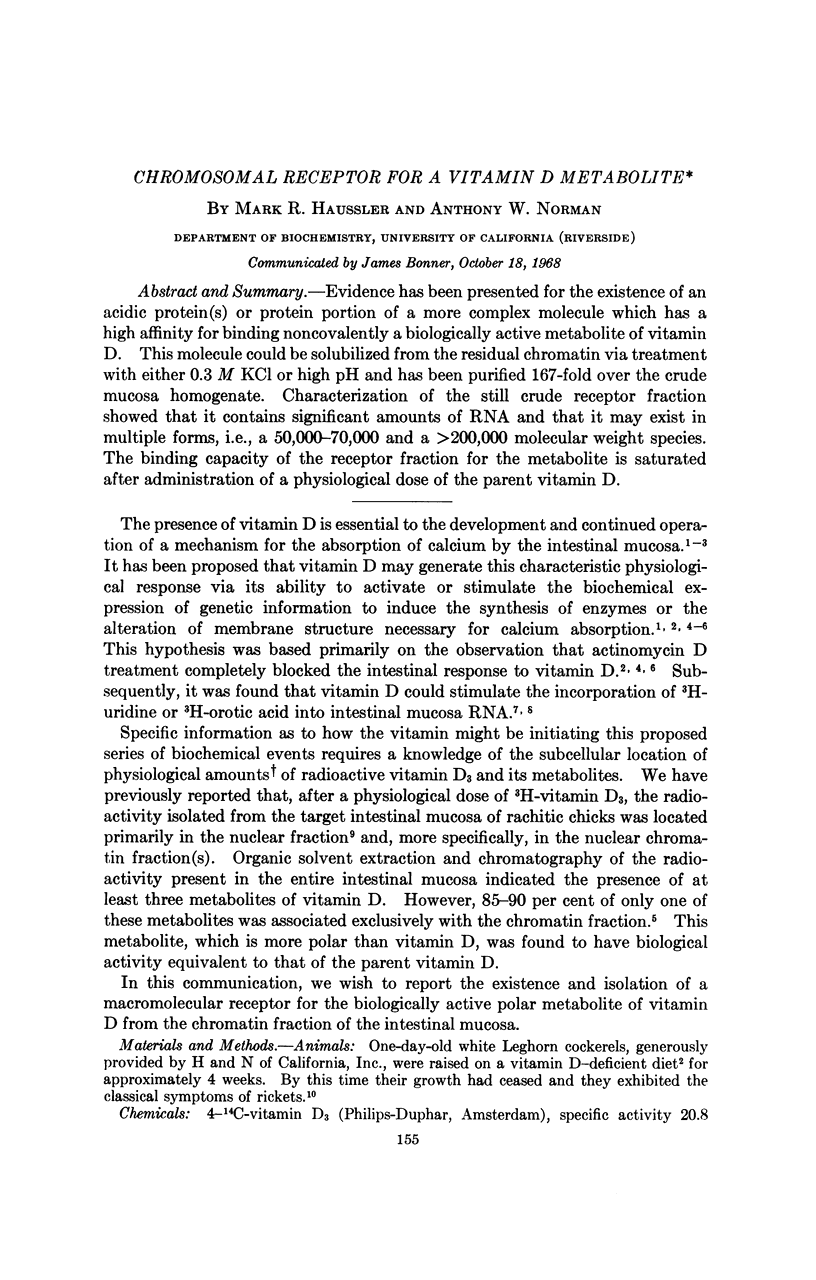

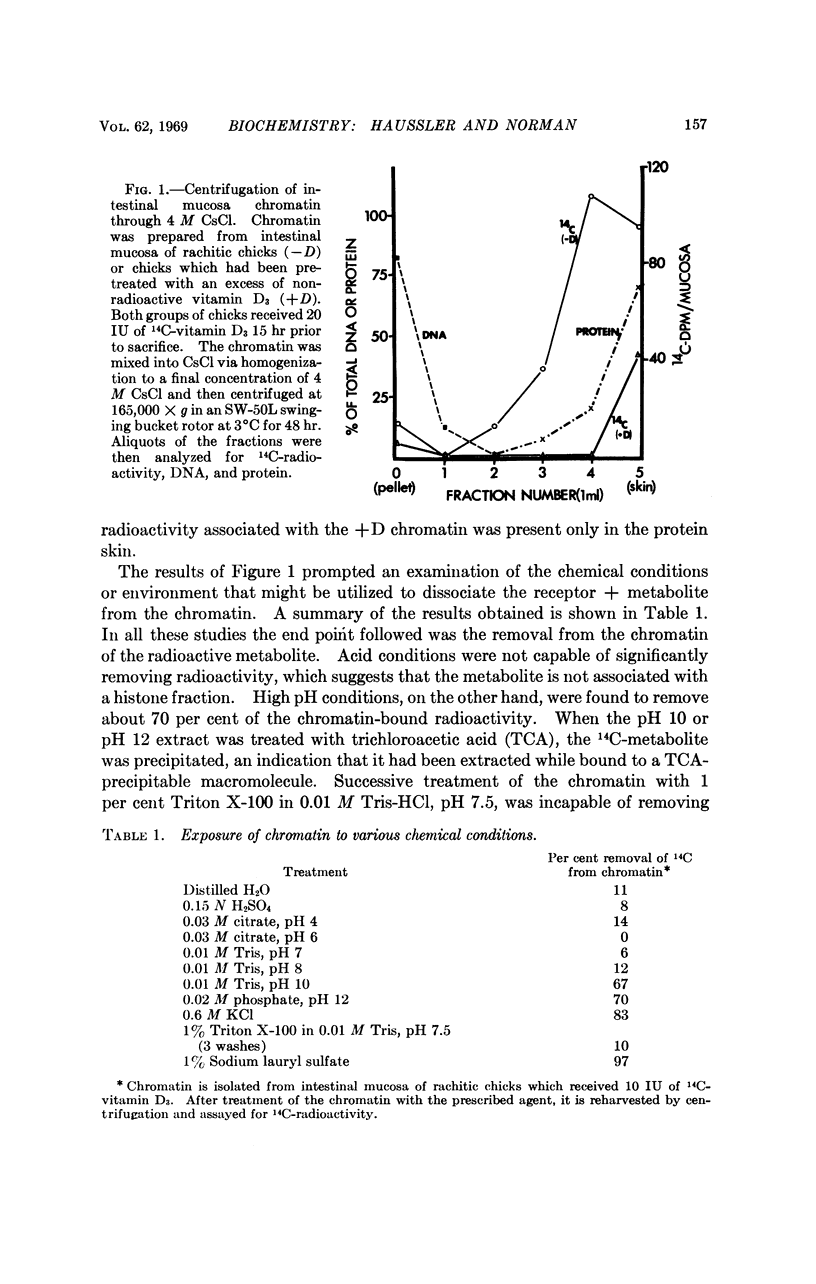
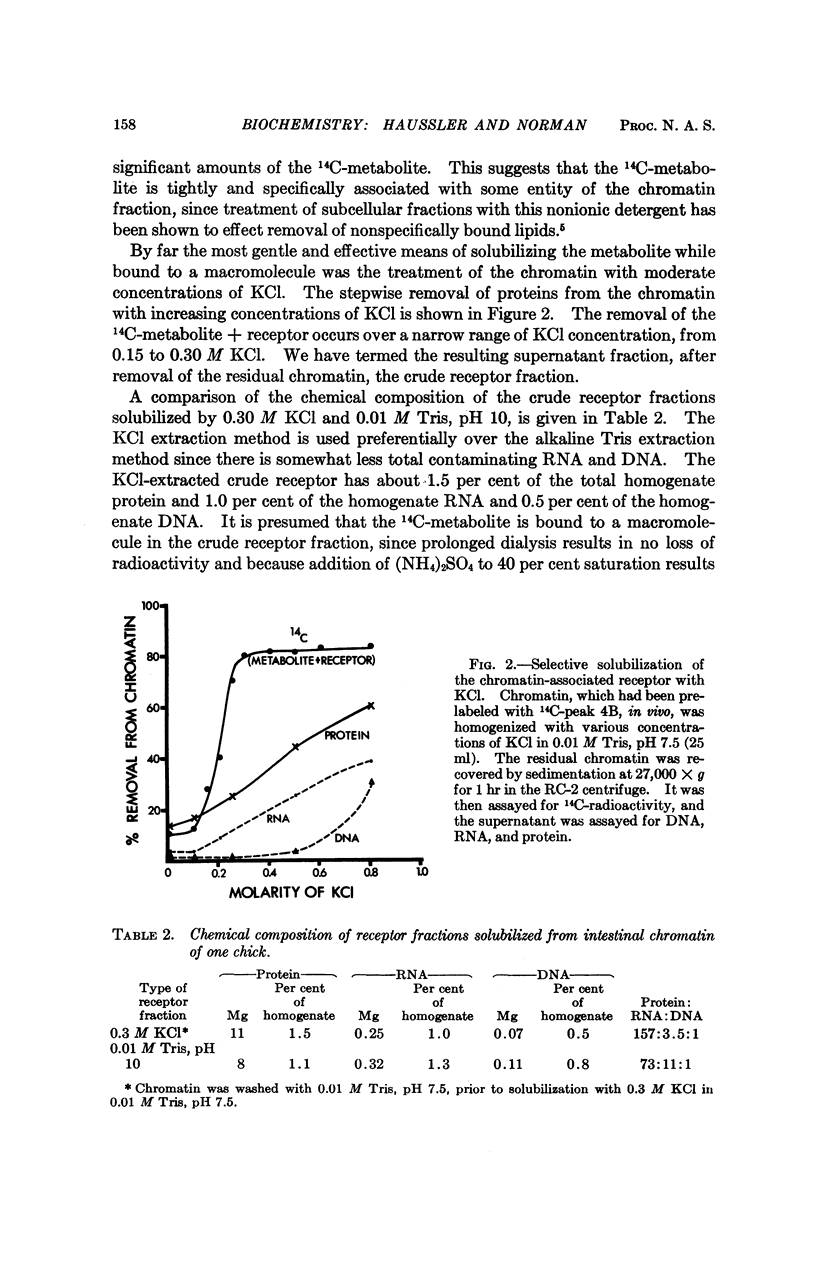
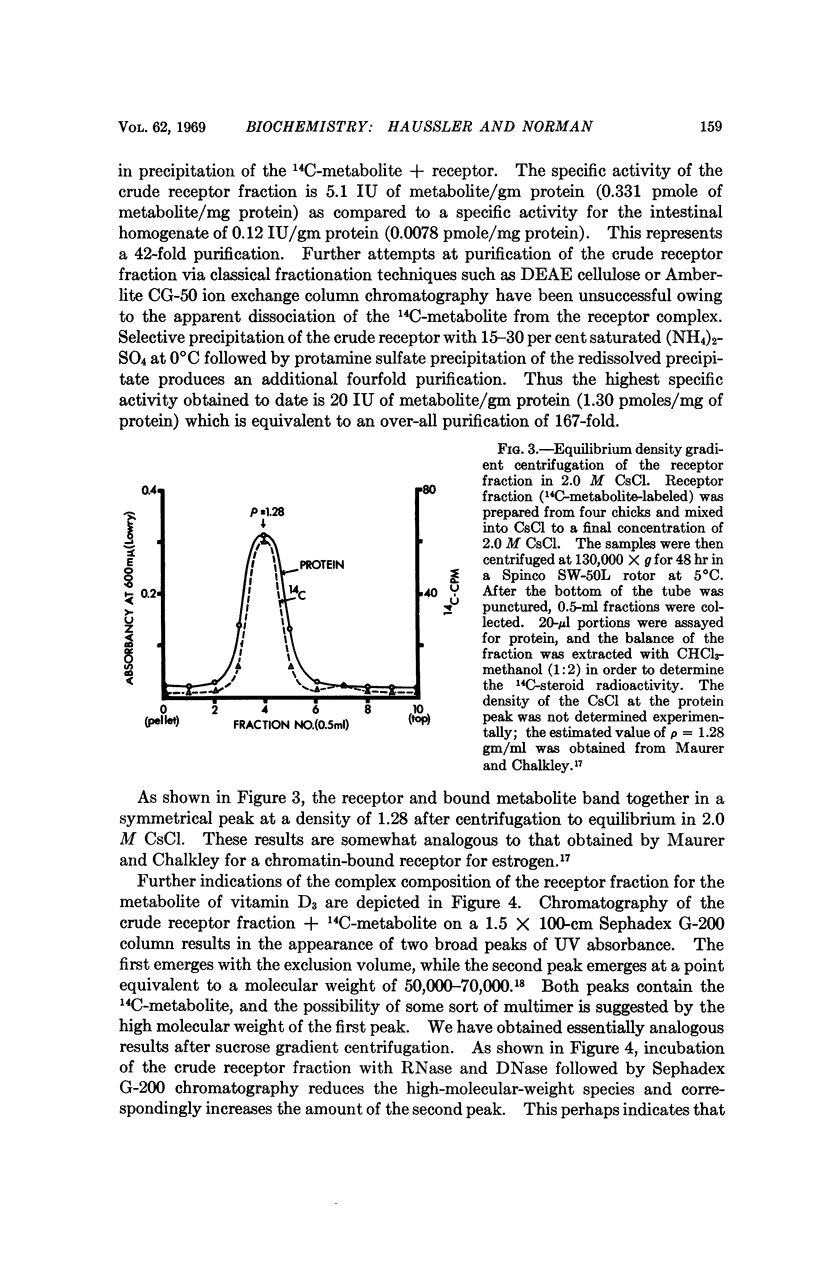
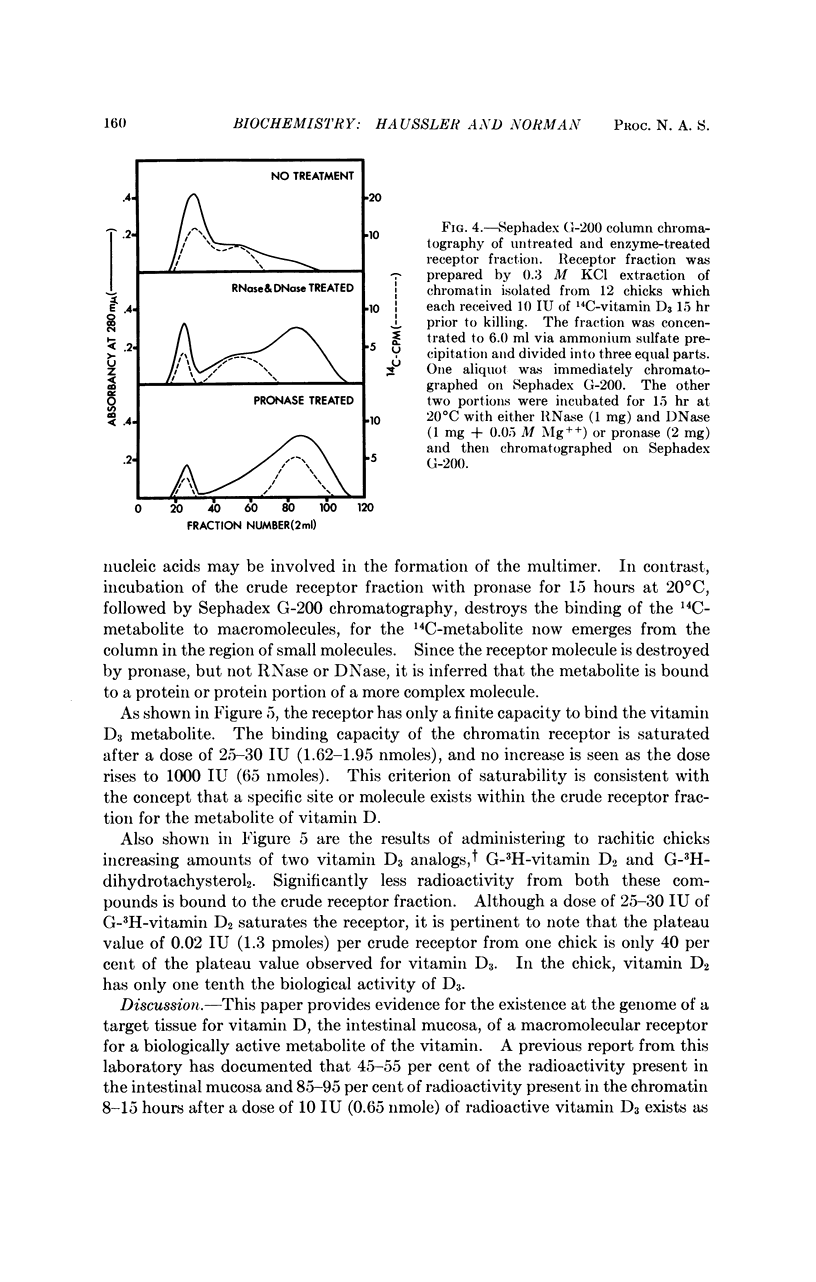

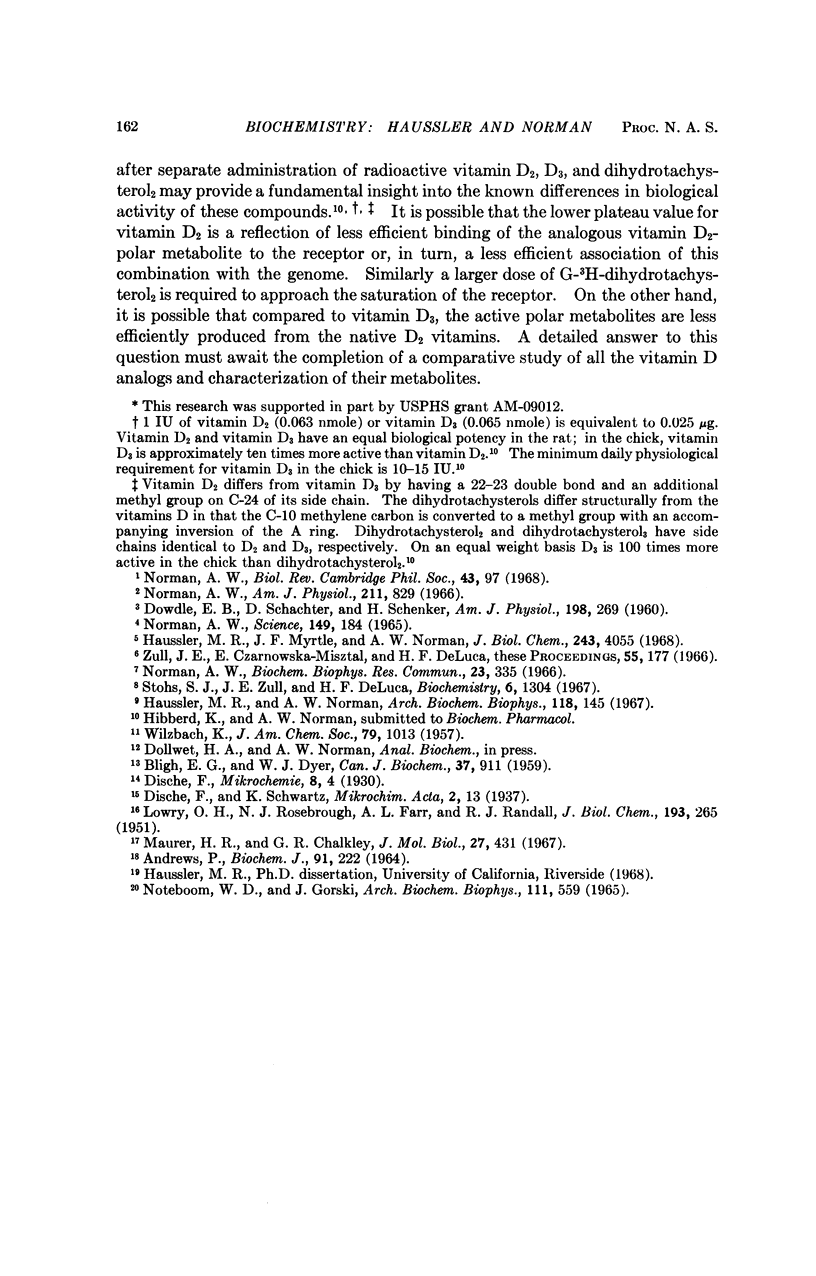
Selected References
These references are in PubMed. This may not be the complete list of references from this article.
- Andrews P. Estimation of the molecular weights of proteins by Sephadex gel-filtration. Biochem J. 1964 May;91(2):222–233. doi: 10.1042/bj0910222. [DOI] [PMC free article] [PubMed] [Google Scholar]
- BLIGH E. G., DYER W. J. A rapid method of total lipid extraction and purification. Can J Biochem Physiol. 1959 Aug;37(8):911–917. doi: 10.1139/o59-099. [DOI] [PubMed] [Google Scholar]
- DOWDLE E. B., SCHACHTER D., SCHENKER H. Requirement for vitamin D for the active transport of calcium by the intestine. Am J Physiol. 1960 Feb;198:269–274. doi: 10.1152/ajplegacy.1960.198.2.269. [DOI] [PubMed] [Google Scholar]
- Haussler M. R., Myrtle J. F., Norman A. W. The association of a metabolite of vitamin D3 with intestinal mucosa chromatin in vivo. J Biol Chem. 1968 Aug 10;243(15):4055–4064. [PubMed] [Google Scholar]
- LOWRY O. H., ROSEBROUGH N. J., FARR A. L., RANDALL R. J. Protein measurement with the Folin phenol reagent. J Biol Chem. 1951 Nov;193(1):265–275. [PubMed] [Google Scholar]
- Maurer H. R., Chalkley G. R. Some properties of a nuclear binding site of estradiol. J Mol Biol. 1967 Aug 14;27(3):431–441. doi: 10.1016/0022-2836(67)90049-6. [DOI] [PubMed] [Google Scholar]
- NORMAN A. W. ACTINOMYCIN D AND THE RESPONSE TO VITAMIN D. Science. 1965 Jul 9;149(3680):184–186. doi: 10.1126/science.149.3680.184. [DOI] [PubMed] [Google Scholar]
- Norman A. W. Actinomycin D effect on lag in vitamin D-mediated calcium absorption in the chick. Am J Physiol. 1966 Sep;211(3):829–834. doi: 10.1152/ajplegacy.1966.211.3.829. [DOI] [PubMed] [Google Scholar]
- Norman A. W. Vitamin D mediated synthesis of rapidly labeled RNA from intestinal mucosa. Biochem Biophys Res Commun. 1966 May 3;23(3):335–340. doi: 10.1016/0006-291x(66)90551-1. [DOI] [PubMed] [Google Scholar]
- Noteboom W. D., Gorski J. Stereospecific binding of estrogens in the rat uterus. Arch Biochem Biophys. 1965 Sep;111(3):559–568. doi: 10.1016/0003-9861(65)90235-3. [DOI] [PubMed] [Google Scholar]
- Stohs S. J., Zull J. E., DeLuca H. F. Vitamin D stimulation of [3H]orotic acid incorporation into ribonucleic acid of rat intestinal mucosa. Biochemistry. 1967 May;6(5):1304–1310. doi: 10.1021/bi00857a012. [DOI] [PubMed] [Google Scholar]
- Zull J. E., Czarnowska-Misztal E., DeLuca H. F. On the relationship between vitamin D action and actinomycin-sensitive processes. Proc Natl Acad Sci U S A. 1966 Jan;55(1):177–184. doi: 10.1073/pnas.55.1.177. [DOI] [PMC free article] [PubMed] [Google Scholar]


